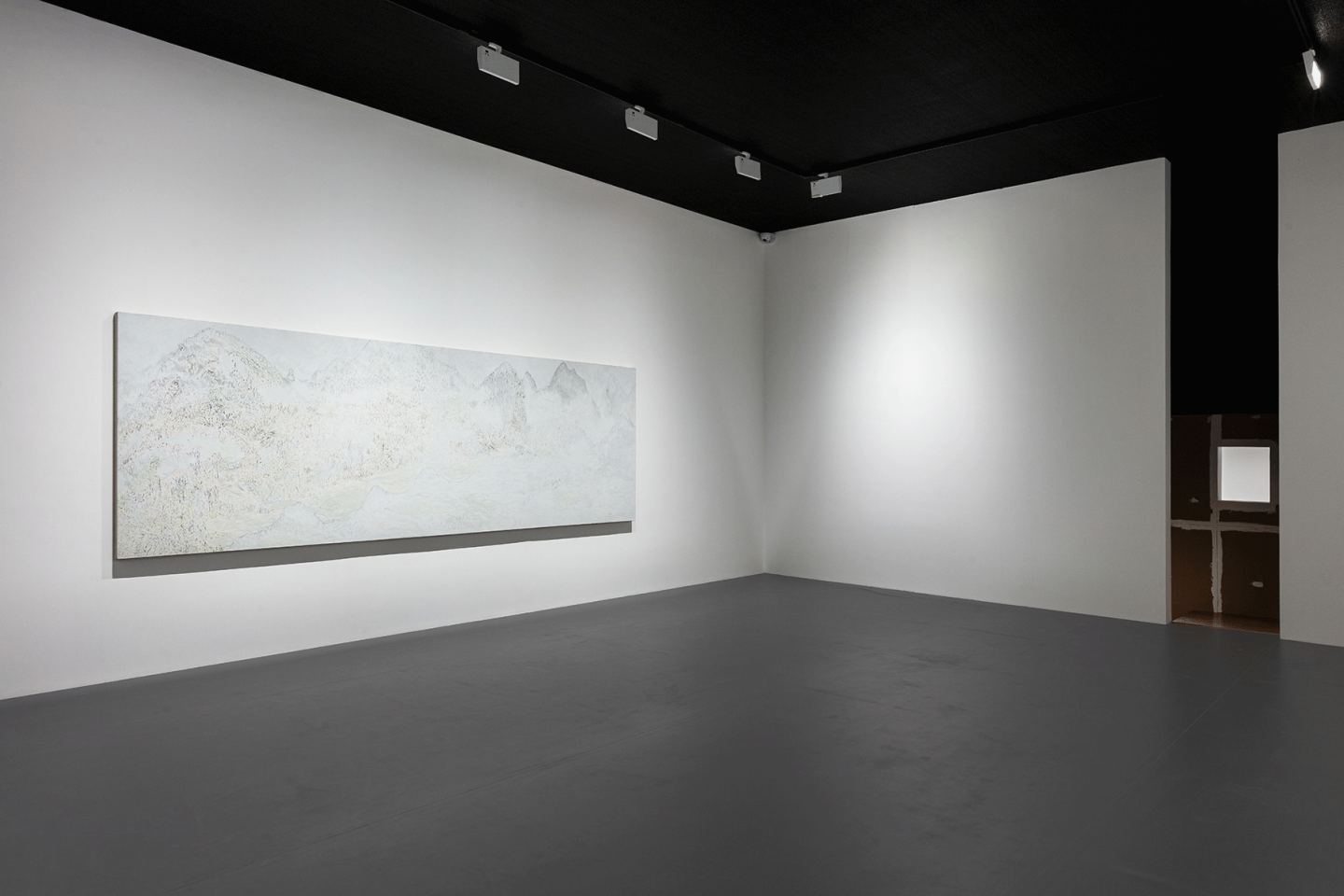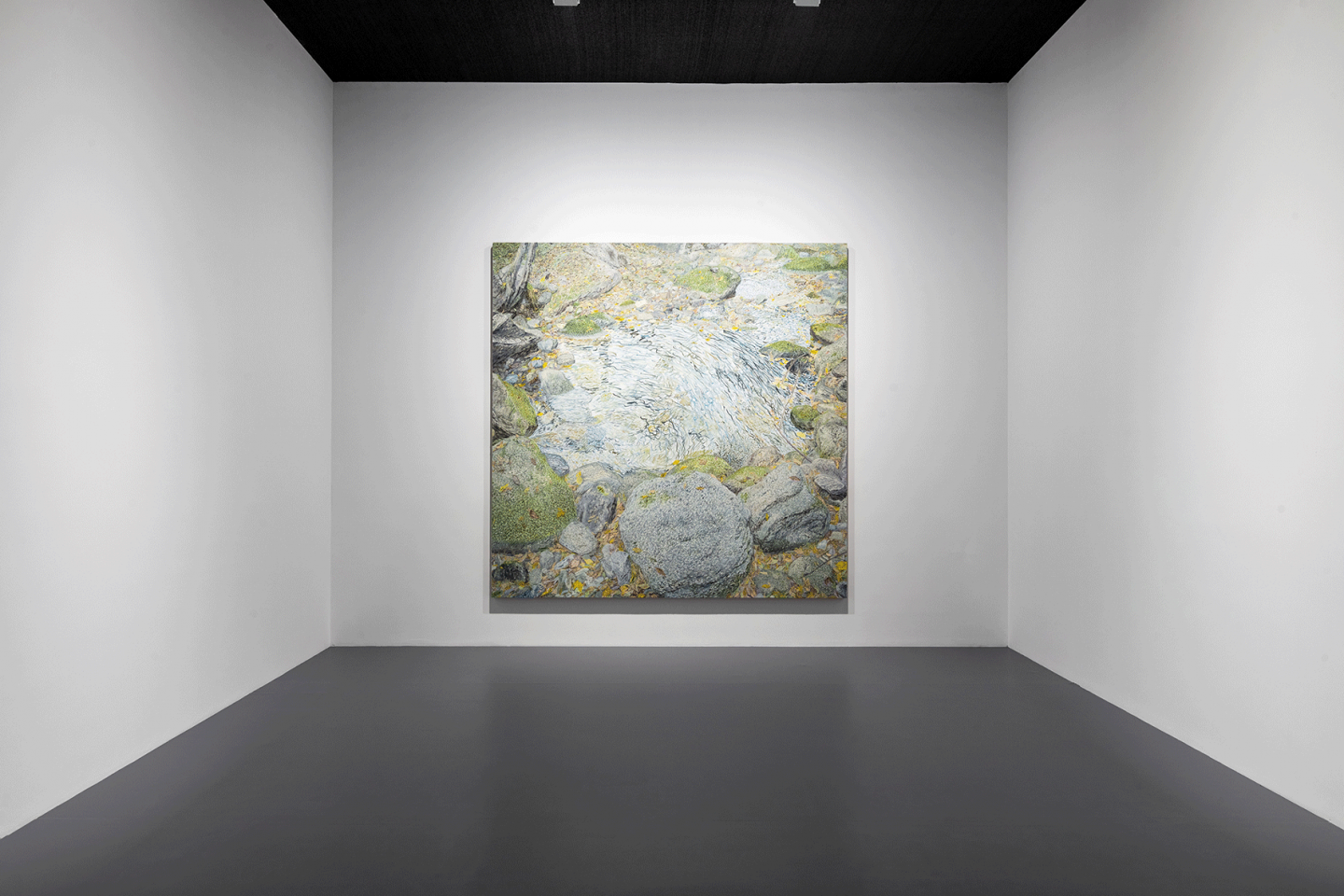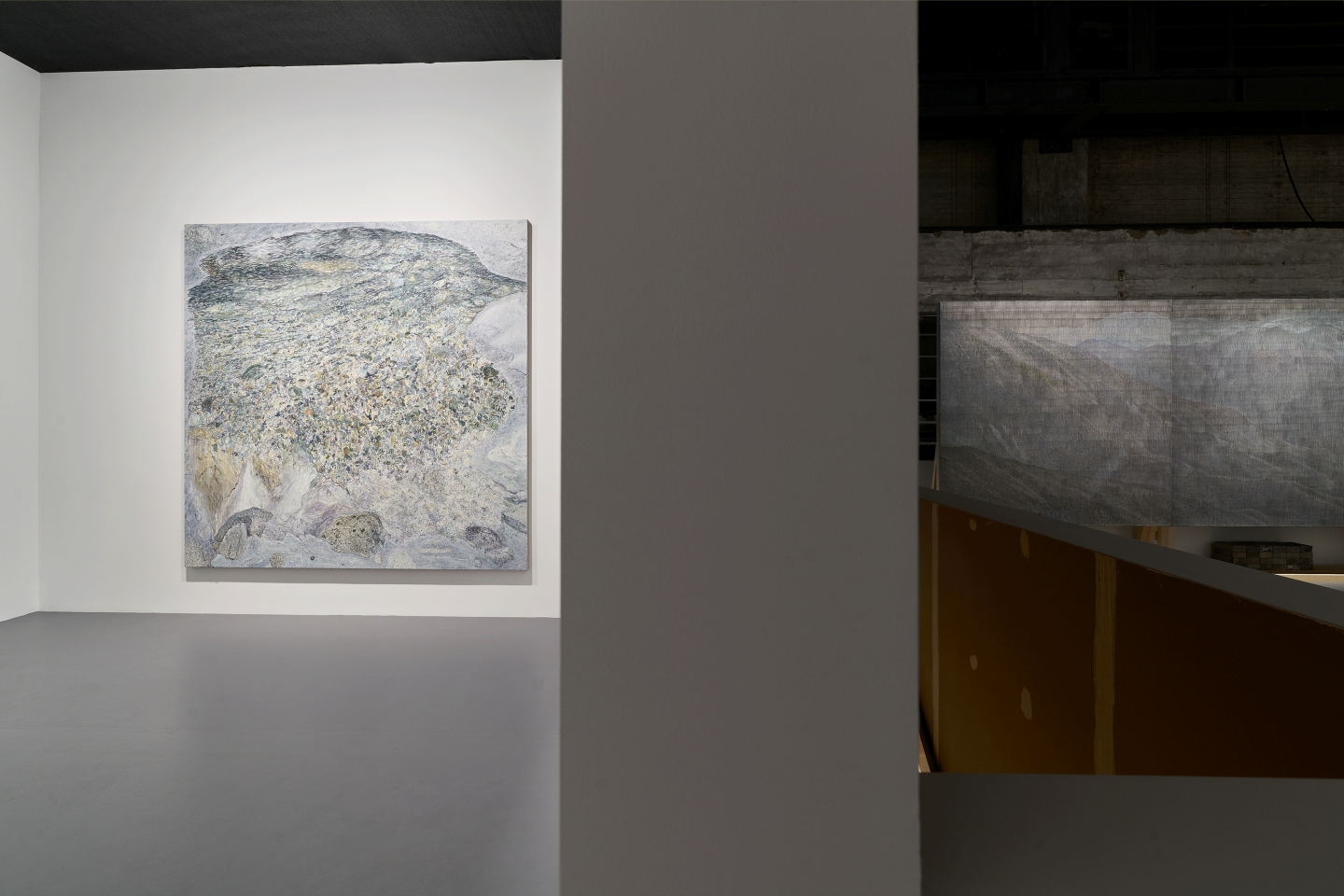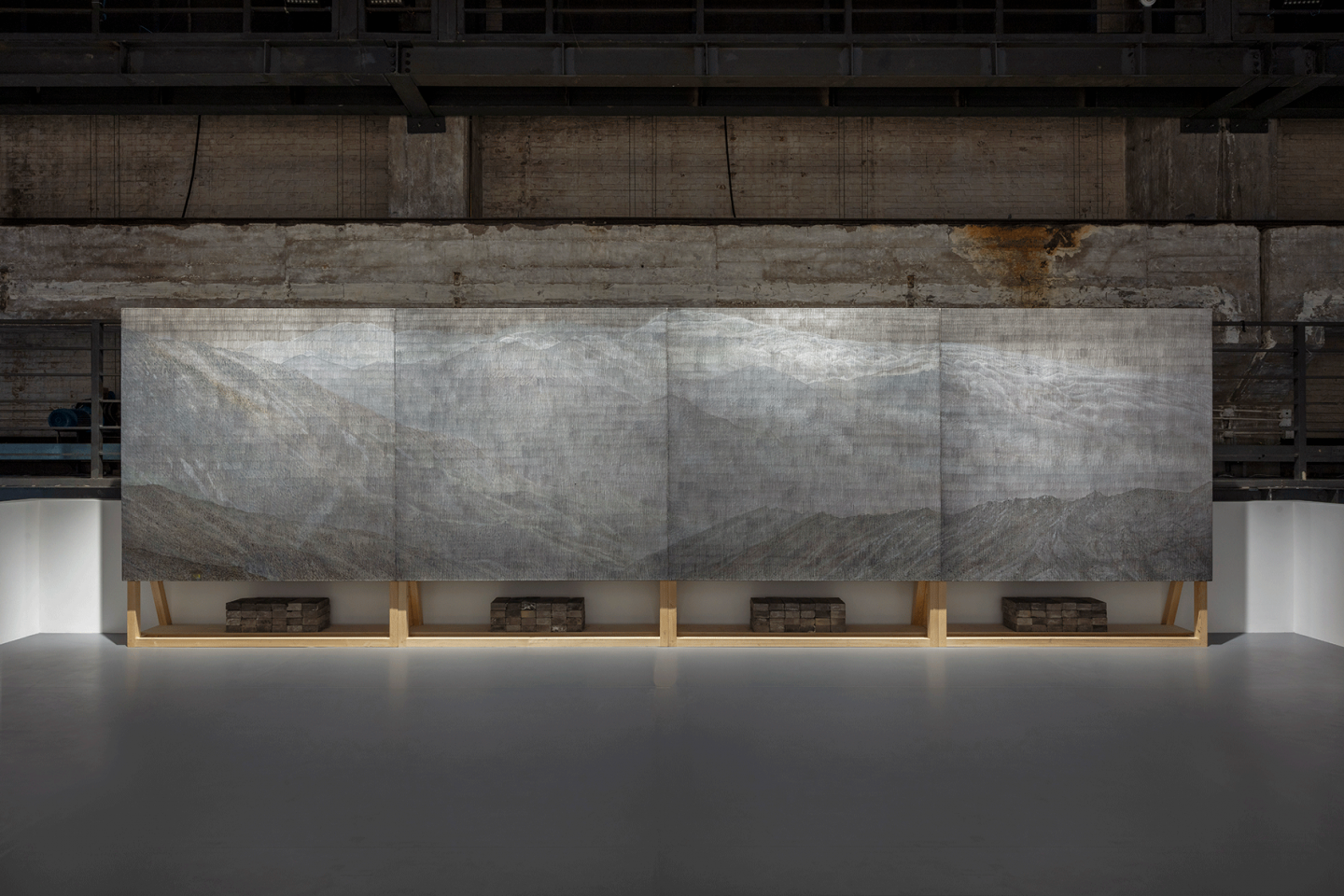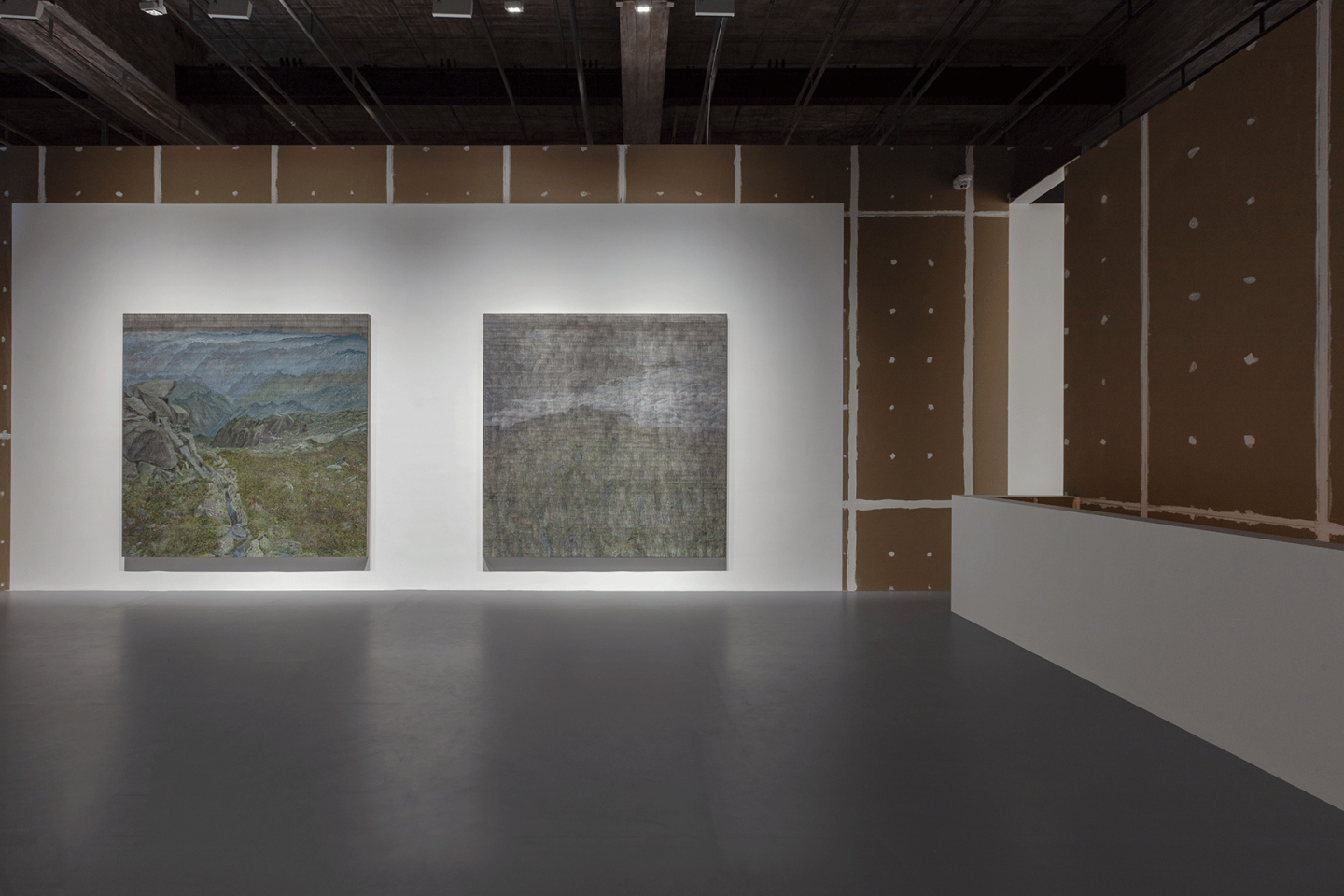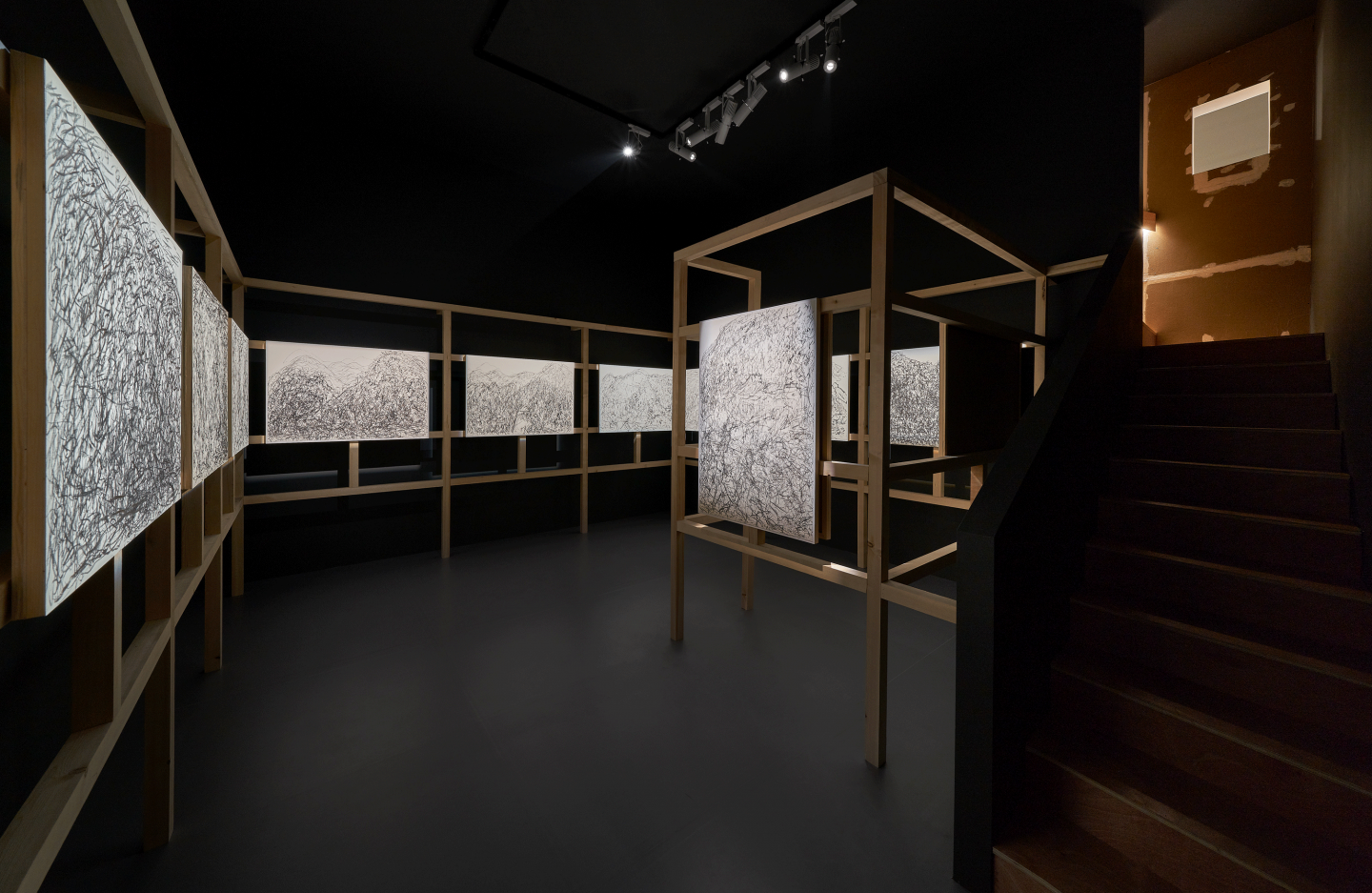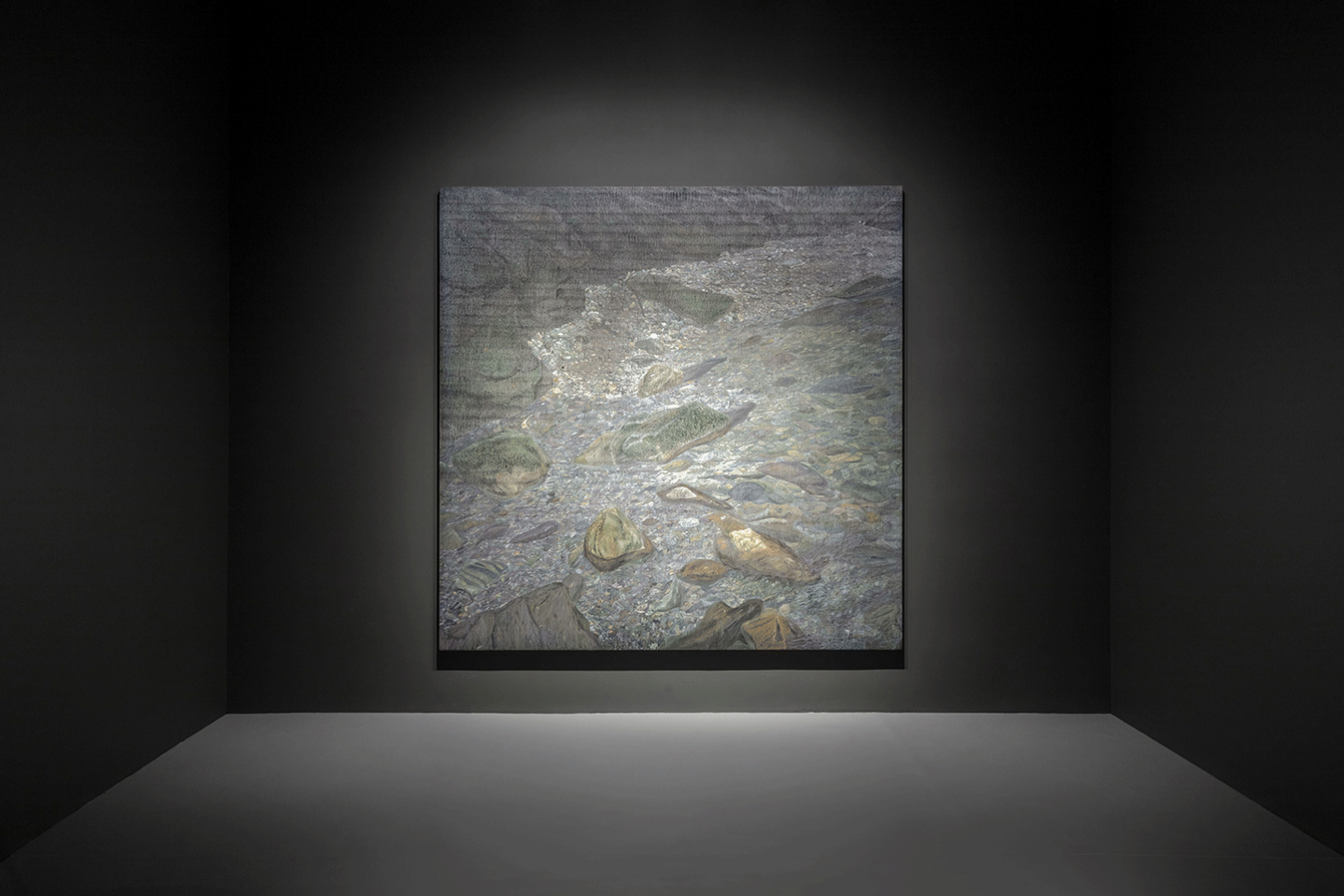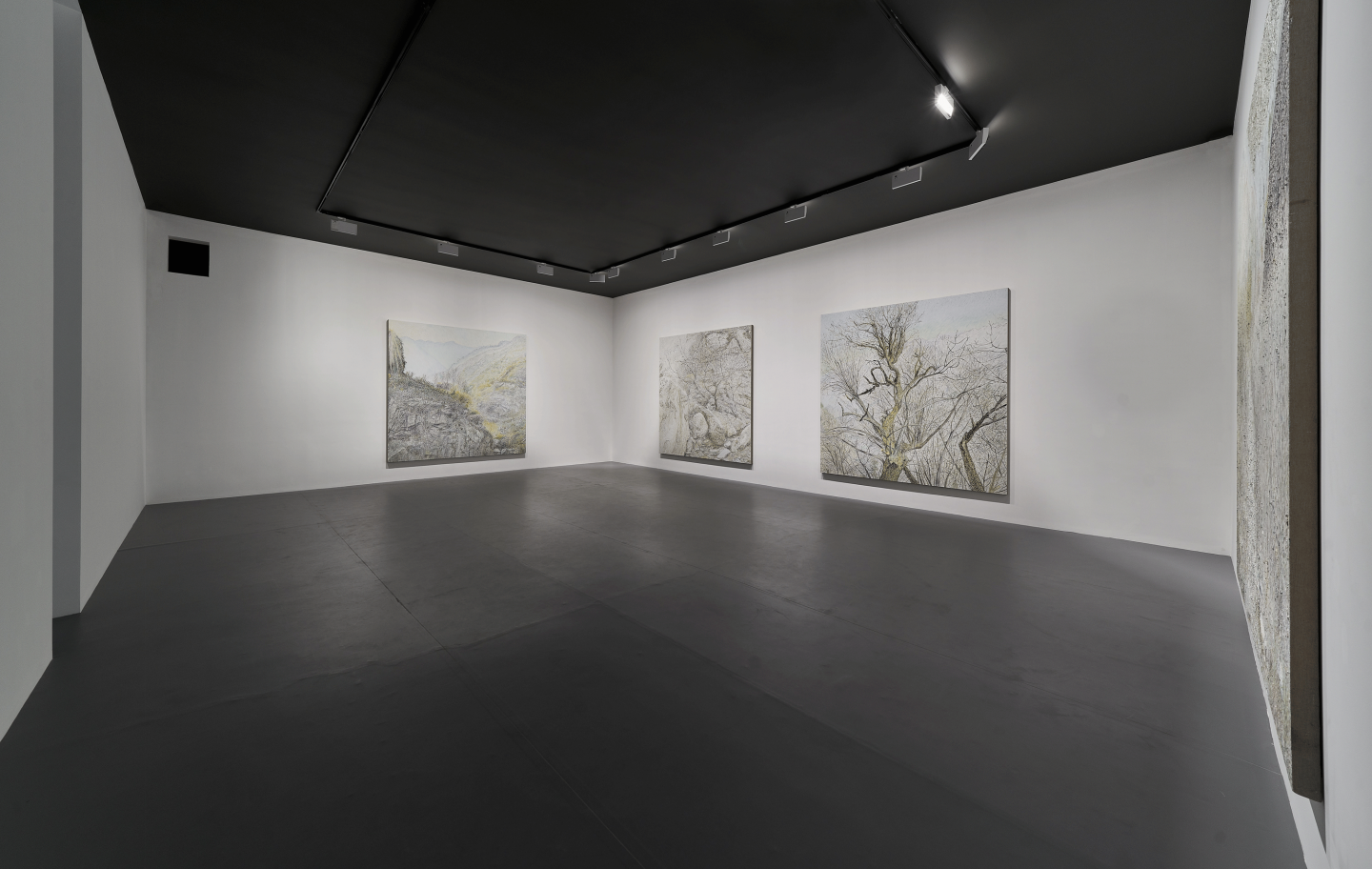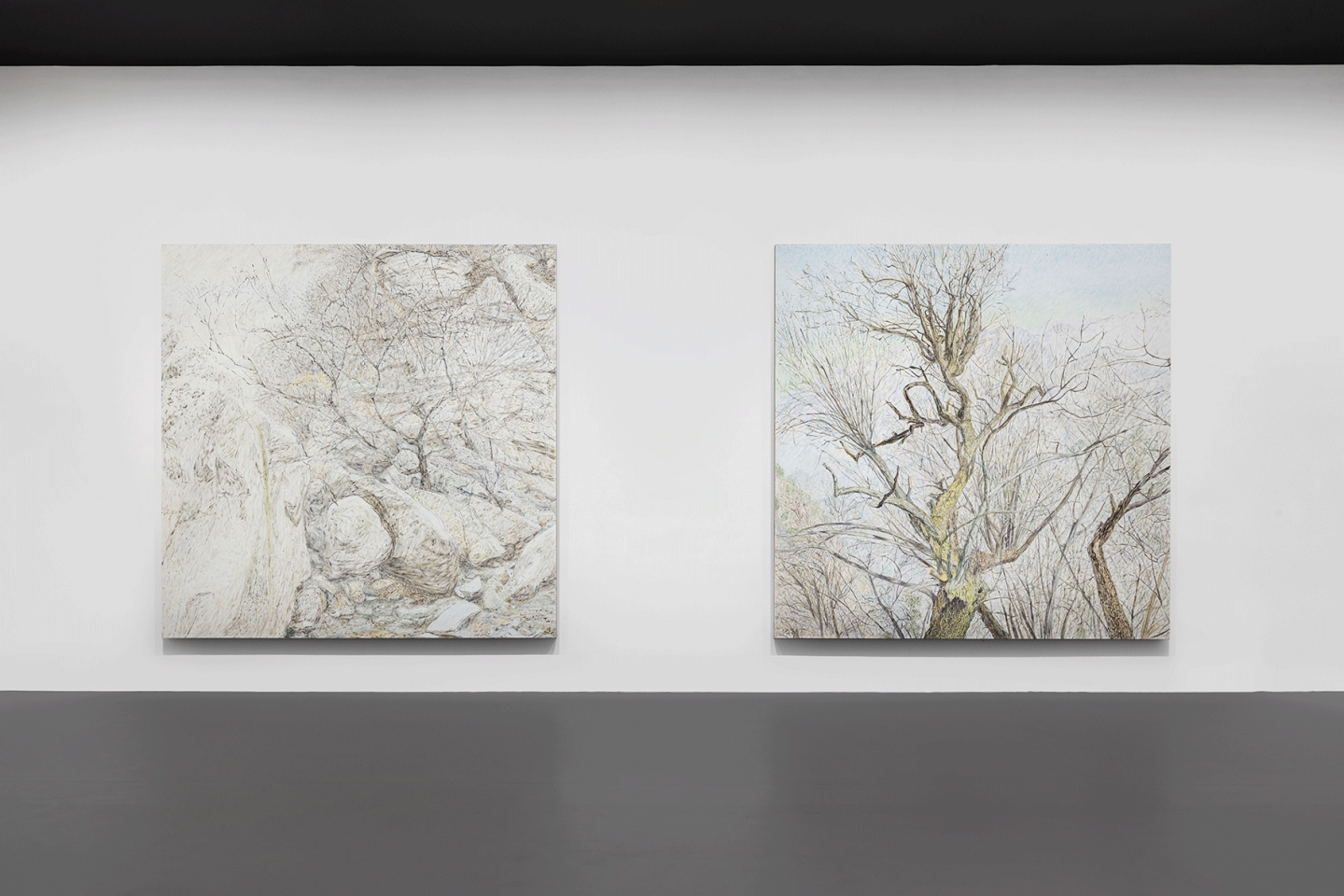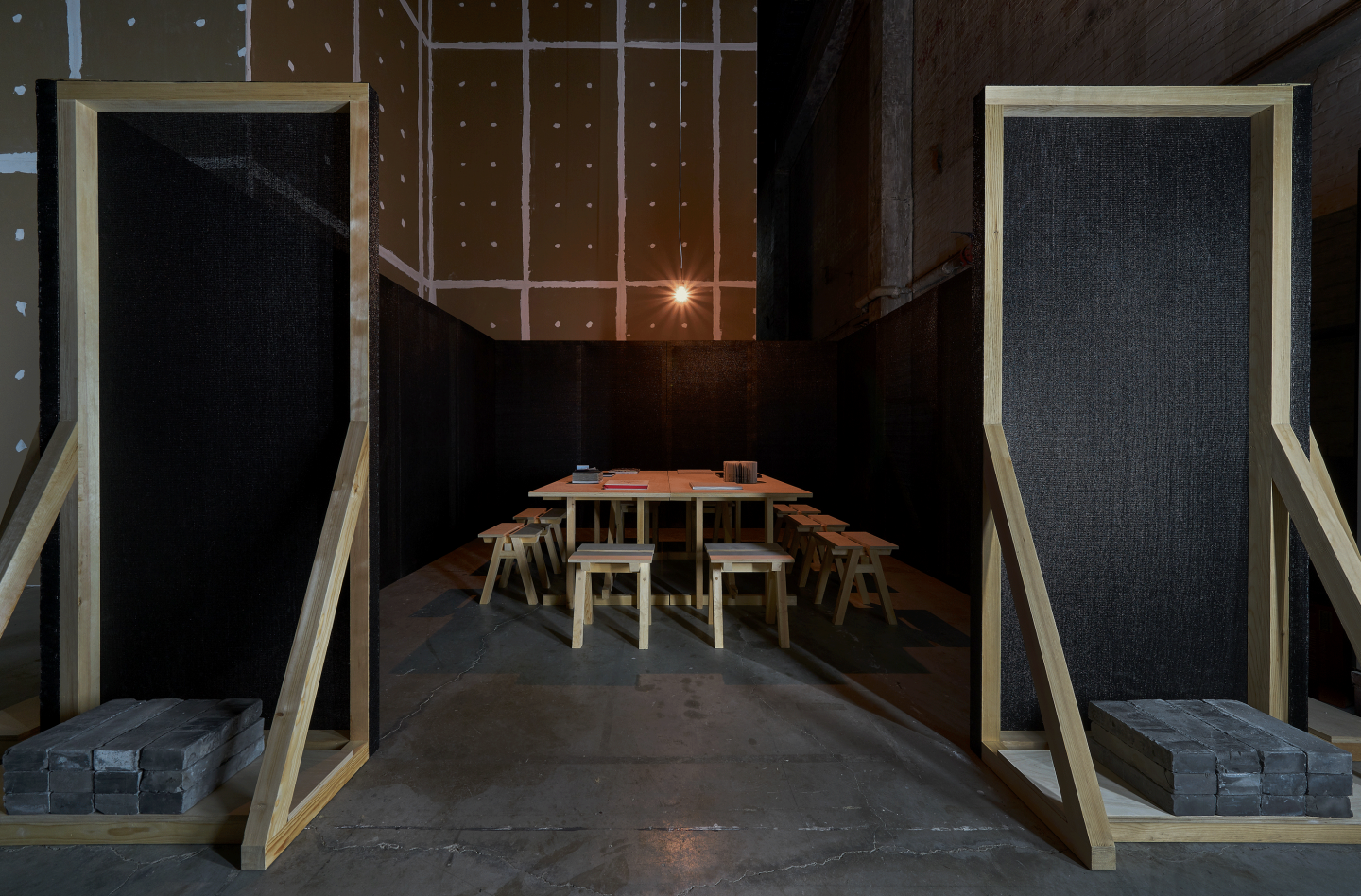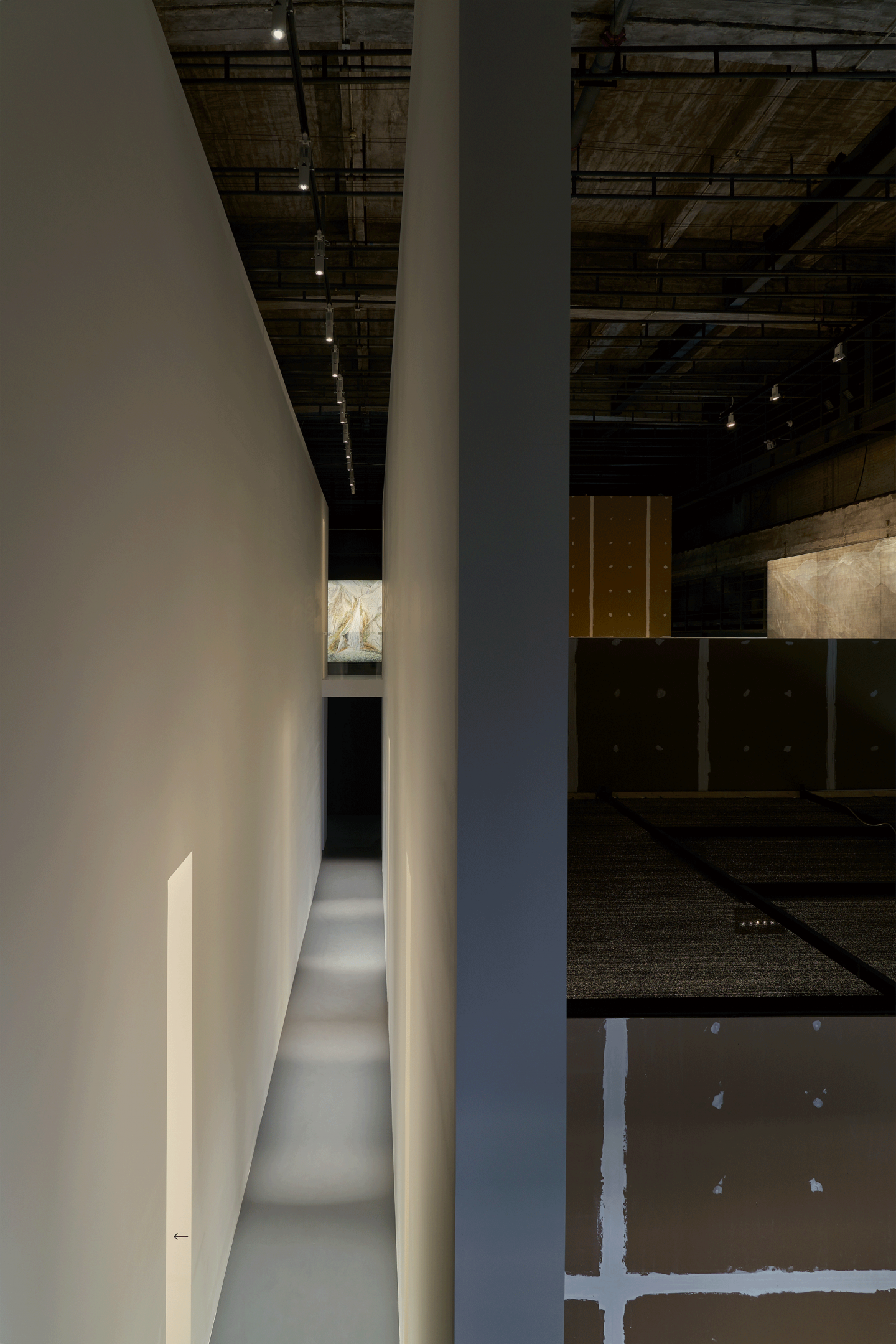















White Space presents Road to Heaven, a solo exhibition of Ouyang Chun’s paintings, on view from May 26 to June 28, 2023, in 798 Art District’s B06 Building. The exhibition marks the first public appearance of Ouyang’s eponymous painting series (2015-2021), inspired by the Zhongnan Mountains.
Rich in narratives, Ouyang’s paintings demonstrate a striking sense of imagination with his bold brushwork, dazzling palettes, and whimsical portrayal of figures. In his early works, such as Child (1998-2012), Tale of Whaling (2006-2007), King (2006-2009), and My Story (2006-2014), one can often sense the passion, unruliness, wisdom, and solitude that are inseparable from the artist’s life.
The subject of Zhongnan Mountains came to Ouyang like a secret calling, a destined arrival. During the days when he was a student at the Xi’an Academy of Fine Arts, the school was still housed inside Xiguo Temple in the city’s Chang’an County. Located at the foot of the Qin Mountains and neighboring the Shaolingyuan tomb sites, the campus once sat above an alluvial plain known as Fanchuan, facing Zhongnan Mountains. In those days, Ouyang often skipped classes at the Academy, setting up his pochade box outdoors and painting en plein air. After almost two decades, the artist once again headed into the mountains, re-entering a long painting retreat by himself.
Ouyang deliberately went off the beaten track, avoiding areas crowded with tourists and venturing into uncharted zones. The passing of the seasons witnessed him walking along trails, climbing over rocks, and even occasionally running into dangers and obstacles. He baked under the scorching sun, or immersed himself in the darkness of the night, feeling the energy of grass, trees, streams, springs, breezes, mists, and stars. The majority of the paintings in this series were done on square canvases, each a snapshot capturing a mesmerizing moment of his trip. Surveying the landscape with his painterly gaze, he renders onto the canvas the life cycles of those tiny existences – how they flourish, decay, and revive. The few panoramic landscapes in ultra-wide format ascend the viewers to the top of the peak, dwarfing the sublime view at one’s feet.
Road to Heaven also marks a painterly departure for Ouyang. Contrasting his wildly expressive and imaginative compositions in the past, these paintings are almost representational and realistic: faithful to his eyes and the order of nature, they offer an immersive experience. While the works remain rich in color and brushwork, the gestures appear more restrained, full of variation. The canvases are devoid of large, bold swaths of colors, rather directing the viewers’ attention to the subtleties of the paint: even the grey of the stone and the green of the grass can generate a kaleidoscopic range of variations in hue, tone, purity, and texture. The artist’s brushstrokes follow the rhythm of nature, masterfully allowing the scenes to oscillate between the real and the illusive: leaves and branches sway as the water gently flows; a wisp of mist seems to seep out from between the rocks and soil. In looking at these details, the paintings in Road to Heaven are highly abstract and interpretive.
In the Chinese tradition, Zhongnan Mountains have historically been a destination for spiritual retreat. Total reclusion might not have been Ouyang’s goal, yet an escape from the mundane routines of urban life, into nature and solitude, was but an inner desire he followed. Two paintings from the same period, The Peach Colony I and II (both 2021), are also on display in this exhibition. The spiritual motif links these two bodies of works, together pointing to the artist’s pursuit in painting – a declaration of aspiration, an elevation of life.
Departures are ultimately followed by returns. The story of the painter will go on, but by the time his brush touches the canvas again, his mind will not have been the same.
